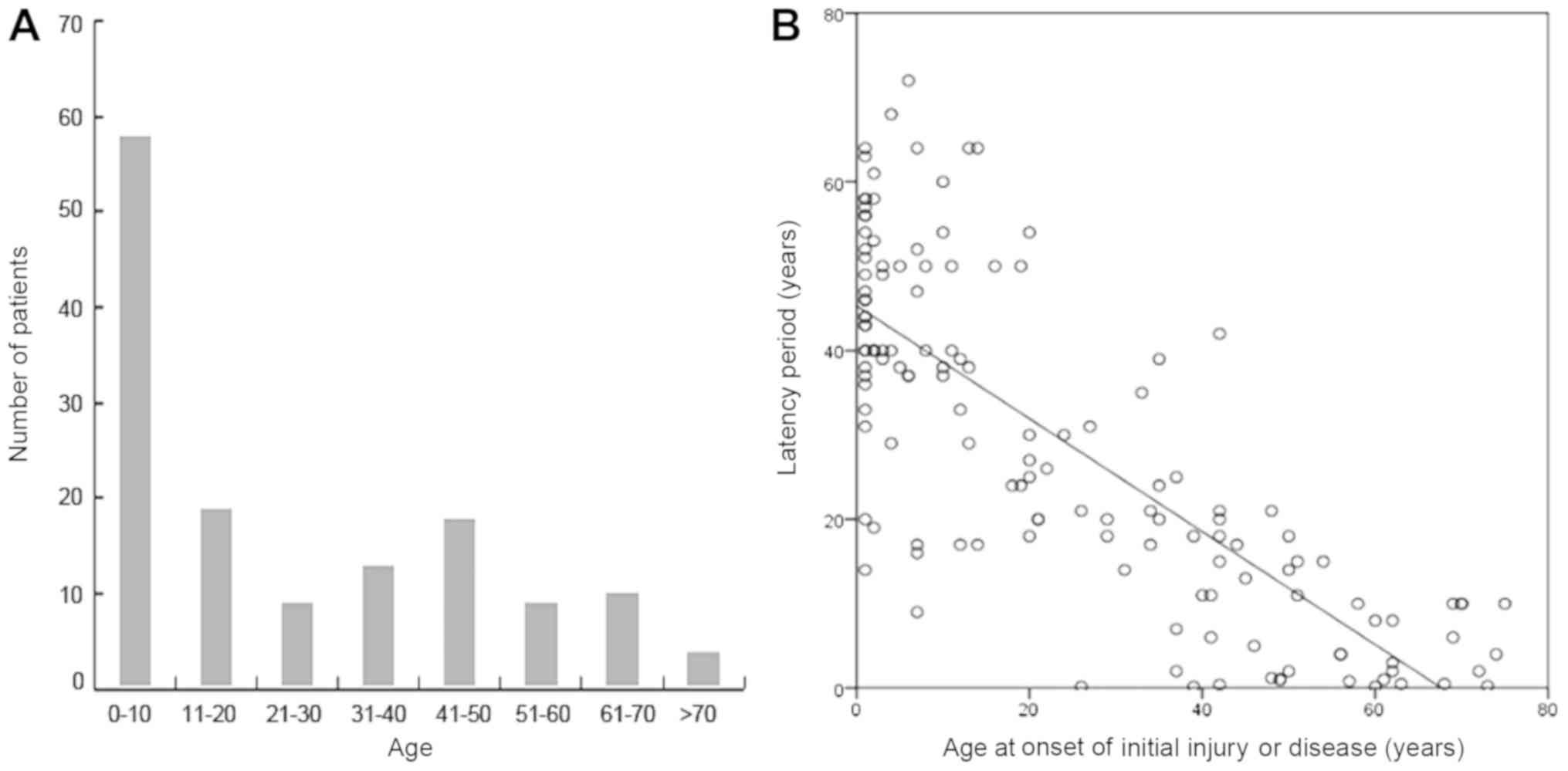Clinical features and treatment of 140 cases of Marjolin's ulcer at a major burn center in southwest China
- Authors:
- Published online on: March 7, 2019 https://doi.org/10.3892/etm.2019.7364
- Pages: 3403-3410
-
Copyright: © Xiang et al. This is an open access article distributed under the terms of Creative Commons Attribution License.
Metrics:
Total
Views: 0 (Spandidos Publications: | PMC Statistics:
)
Total PDF Downloads: 0 (Spandidos Publications: | PMC Statistics:
)
Abstract
Marjolin's ulcer is a type of malignant tumor that occurs in scar tissue. The present study aimed to summarize and analyze the aetiology, clinical characteristics, treatment methods, metastasis and prognosis of this disease. A total of 140 cases of Marjolin's ulcer encountered at the Institute of Burn Research, Southwest Hospital (Chongqing, China) between January 2013 and December 2017 were retrospectively analyzed. Demographic data, clinical characteristics, occurrence of bone invasion and lymph node metastasis, as well as treatment and prognosis were statistically analyzed. Among the 140 patients, the initial injury or primary disease occurred at 1‑75 years of age, while Marjolin's ulcer occurred at 15‑85 years of age (mean, 53.3±1.2 years). The mean latency period was 28.8±1.7 years. The most common initial injury of the patients was flame burns, followed by skin masses, trauma, skin ulcerations caused by repeated scratching/friction, and scalding. The age at onset of initial injury or disease in patients had a significantly negative correlation with the latency period (P<0.01). The most common lesion locations were the lower limbs (42.1%), followed by the head, face and neck (34.5%). Of the 140 patients, 46 cases (32.9%) had bone invasion, 33 cases (23.6%) had lymph node enlargement and only 5 cases (3.6%) had lymph node metastasis. The skull was the bone that was most susceptible to Marjolin's ulcer invasion. The prevalence of bone invasion in patients with head, face and neck lesions was significantly higher than that in patients with lesions in other locations (P<0.01). The surgical methods applied were skin grafting, local flap repair, amputation and island flap repair. In the 65 cases who underwent follow‑up, recurrence mainly occurred within 1 year after surgery. In conclusion, Marjolin's ulcer mainly occurred in males and was a scar carcinoma after a flame burn in most cases. Autologous skin grafting and local skin flap repair were the major repair methods. The peak period of recurrence was within one year after surgery and patients should receive regular follow‑ups.














